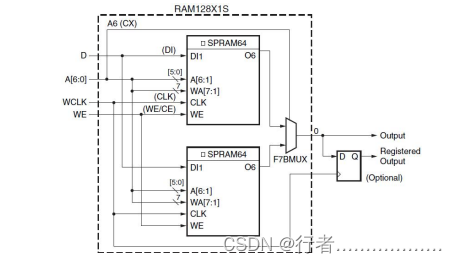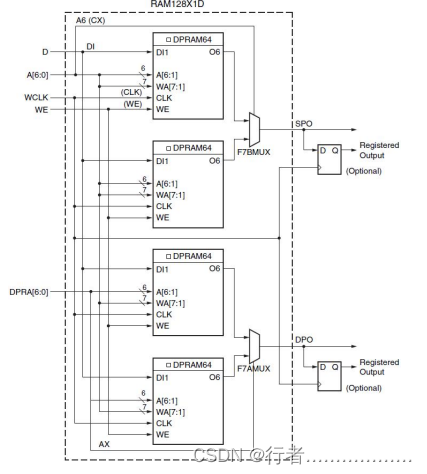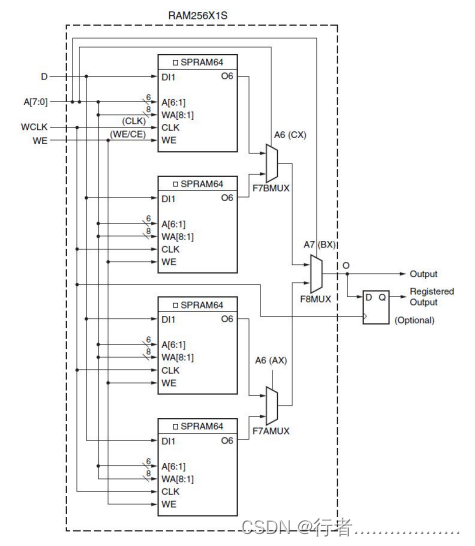1) 128 X1 Single Port Distributed RAM
下图中可以看出来,通过2个LUT的组合使用可以串联实现更大深度的分布式RAM.下图中出现了F7BMUX的加入, F7BMUX可以用于LUT输出的选通.

原语调用:
RAM128XIS#(INIT(128'h00000000000000000000000000000000) // Initial contents of RAM)RAM128XIS_inst (
.O(O),// 1-bit data output
.A0(A0),
.Al(AI),// Address[1]
.A(A2),
.A3(A3),
.A4(A4),
.A5(A5),//
Α6(A6),// Address[6] input bit
D(D),//1-bit data input
.WCLK(WCLK), //Write clock input
.WE(WE)//Write enable input);
2) 128 X 1 Dual Port Distributed RAM
128x1的双口RAM需要4个LUT实现,正好是一个SLICEM,并且分别使用了F7BMUX和F7AMUX.

原语调用:
RAM128XID#(INIT(128'h000000))
RAM128XID_inst (
.DPO(DPO),// Read port 1-bit output
.SPO(SPO)// Read/write port I-bit output
.A(A).//Read/write port 7-bit address input
.D(D),//RAM data input
.DPRA(DPRA), // Read port 7-bit address input
.WCLK(WCLK),//Write clock input
.WE(WE)// Write enable input);
3)256 X1 Single Port Distributed RAM
256x1 的单口 RAM 需要 4个 LUT 实现,也正好是一个 SLICEM,并且分别使用了 F7BMUX 和 F7AMUX以及一个 F8MUX.

原语调用:
RAM256XIS #(INIT(256'h00000))
RAM256XIS_inst (
.O(O)// Read/write port 1-bit output
.A(A),// Read/write port 8-bit address input
.WE(WE)// Write enable input
.WCLK(WCLK), // Write clock input
.D(D)//RAM data input );
猜你喜欢
网友评论
- 搜索
- 最新文章
- 热门文章
